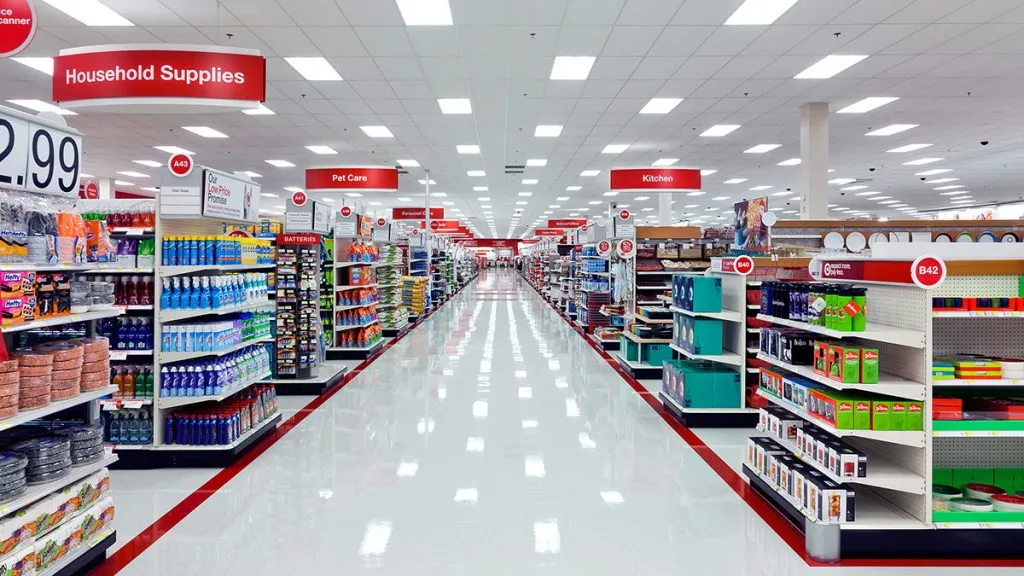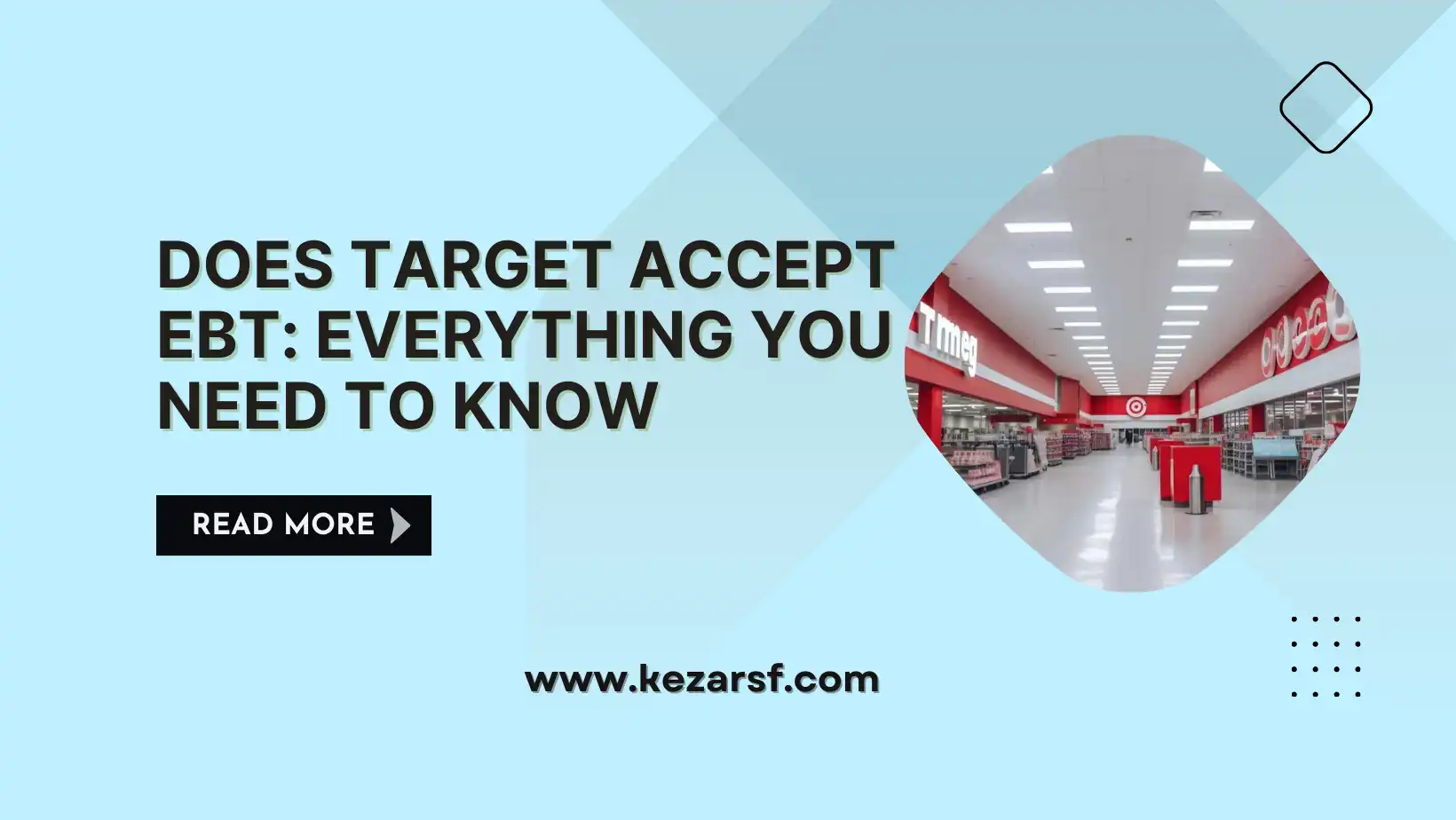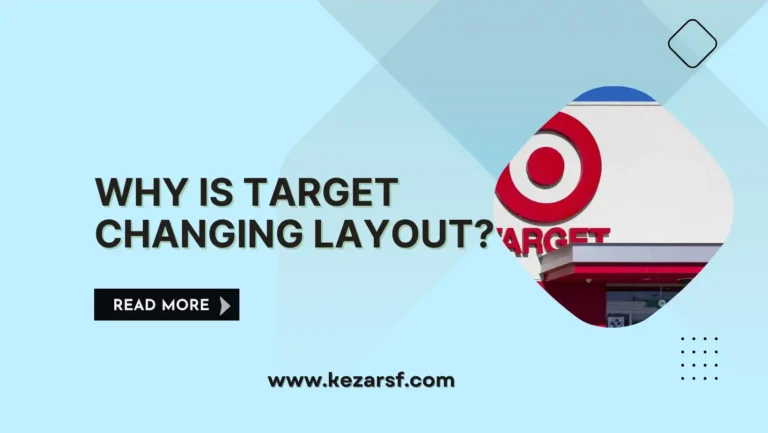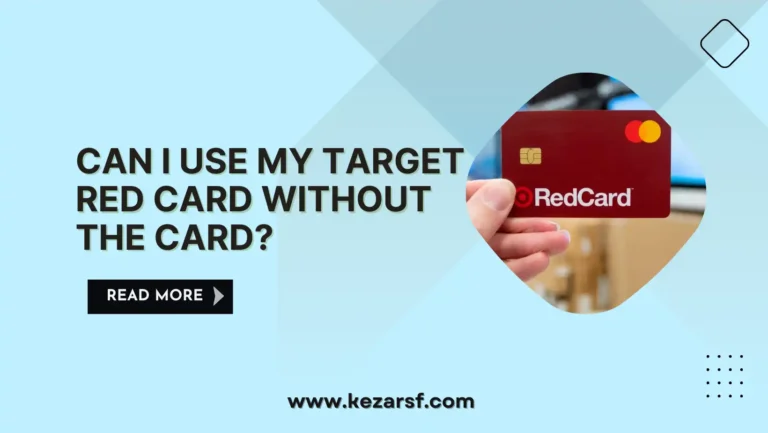Does Target Accept EBT: Everything You Need to Know
Does Target Accept Ebt? When it comes to accepting EBT payments, Target, a well-known retail chain known for its extensive product selection, which includes grocery and home goods, frequently raises questions.

To clarify this crucial component of accessibility for beneficiaries, we will look into and examine whether Target accepts EBT payments.
Knowing where Electronic Benefit Transfer (EBT) payments are accepted is crucial as more people and families rely on government help programs like the Supplemental Nutrition Assistance Program (SNAP).
Understanding Electronic Benefits Transfer (EBT)
Government benefits can be received and used electronically through a system known as electronic benefit transfer, or EBT.
Eligible persons are given debit cards, which resemble conventional bank cards, so they can access their benefits instead of paper checks or vouchers.
Traditional methods of benefit distribution have been replaced by EBT, which provides a more effective and up-to-date manner.
The way we handle our accounts and access services has completely changed in the digital era thanks to technological breakthroughs.
Electronic Benefits Transfer (EBT) is one such innovation that has changed how government aid programs operate.
Benefits are now distributed more effectively, safely, and conveniently for recipients thanks to this technology.
READ ALSO:
- How Much Does Target Pay?
- Does Target Host Its Deal Days Event?
- Why is Target Locking up Products?
- How Do I Log into Target Workday Login Portal?
Does Target Accept EBT Payments?

Target accepts EBT payments in its shops that had a designated grocery department.
For customers reliant on government help programs, knowing if Target accepts EBT payments is essential.
Verifying the most recent acceptance policy at the targeted Target store is essential, and you should know any restrictions or exclusions.
People can successfully navigate the retail environment and use their EBT benefits to fulfill their unique requirements.
What is Target’s EBT Acceptance Policy?
It is wise to review Target’s official policies and remarks on this subject to find out whether the business accepts EBT payments.
Examining additional merchants who accept EBT payments give customers more alternatives for obtaining necessities.
1. Exclusions and Limitations
Although Target’s designated grocery areas are normally covered by its EBT payment acceptance policy, it’s crucial to be aware of any potential restrictions or exclusions.
EBT payments might not be accepted for all the products in a Target shop.
2. Locator and Verification of Stores
Individuals can use the store finder tool on Target’s official website or get in touch with their neighborhood Target store to find out whether the shop accepts EBT payments.
It is recommended to confirm the current acceptance of EBT payments at the targeted Target shop because restrictions can change depending on location and regional legislation.
We will discuss the value of researching local retailer EBT acceptance regulations in this part to help beneficiaries get the most out of their benefits.
Types of Electronic Benefits Transfer(EBT)
Government assistance programs now deliver benefits through electronic benefit transfers (EBT), giving clients a quick and safe means to access essential resources.
EBT includes a variety of benefits, each with a distinct objective to help people and families in need.
We’ll examine the various Electronic Benefits Transfer (EBT) formats and how important they are for dispensing critical aid.
1. Supplemental Nutrition Assistance Program (SNAP)
The Supplemental Nutrition Aid Program (SNAP) and Temporary Assistance for Needy Families (TANF) are the two main government aid programs most commonly connected with EBT.
The Food Stamp Program, formerly known as SNAP, helps low-income people and families buy wholesome food.
2. Temporary Assistance for Needy Families
Another prominent EBT program that seeks to offer temporary financial support to families facing financial trouble is Temporary Support for Needy Families (TANF).
EBT cards can get TANF benefits, which can pay for a variety of necessities like food, clothes, housing, utilities, and other necessary costs.
Depending on the state or location, the precise qualifying conditions, and benefit amounts may change.
What are the Advantages of EBT?
EBT was introduced, and both government organizations and beneficiaries have benefited from it. Here are several major advantages:
1. Enhanced Efficiency
By doing away with paper checks, EBT lowers expenses and paperwork associated with administration.
Benefits can now be distributed more efficiently and precisely, guaranteeing that recipients get the help they need on time.
2. Increased Security
With EBT, there is almost no chance of checks being lost or stolen. The system’s total security is increased by the use of PIN numbers and secure card technology, which makes sure that only, allowed people can access the advantages.
3. Convenience and Flexibility
EBT cards provide participants the opportunity to purchase anywhere they choose by allowing them to be used at allowed shops such as grocery stores, supermarkets, and farmer’s markets.
Making purchases electronically makes the procedure easier and eliminates the stigma attached to using paper vouchers.
4. Transaction Tracking
Because EBT transactions are logged electronically, beneficiaries and government organizations can more easily track and monitor expenditures.
This information can spot patterns, enhance program administration, and uncover possible benefit fraud.
Challenges and Upcoming Changes on EBT
Although EBT has unquestionably improved the way government help programs are delivered, there are still issues and room for improvement.
These include limitations imposed by technology, a lack of acceptability at specific shops, and the requirement for greater recipient education and awareness.
Governments and other stakeholders must address these issues and keep improving the EBT system to better assist individuals in need.
Importance of Understanding Retailers that Accept EBT
It is important to make sure that people and families receiving government aid can readily gain necessary commodities in a society where having access to basic requirements is a fundamental right.
The provision of benefits has been revolutionized by Electronic Benefits Transfer (EBT) systems, but it is as important for beneficiaries to know which merchants accept EBT.
We will discuss the importance of comprehending EBT-accepting merchants and how it guarantees that individuals in need have access to essential resources.
1. Assuring EBT Recipients’ Accessibility
Government aid initiatives like the Temporary Assistance for Needy Families (TANF) and the Supplemental Nutrition Assistance Program (SNAP) help people and families that are struggling financially.
However, the availability of necessary products for participants is crucial to these programs’ efficacy.
To guarantee that help benefits can be utilized to buy essential things, it is essential to know which stores accept EBT.
2. Increasing Choices and Options
The possibilities and selections accessible to beneficiaries are increased when they are aware of the stores that take EBT.
The capacity to pick where they purchase is given to receivers by recognizing and becoming familiar with these businesses, giving them the freedom to base their choices on convenience, cost, and quality.
Enabling people to choose items that suit their dietary requirements, cultural preferences, and personal circumstances, promotes a sense of dignity.
3. Having Access to Wholesome Food
SNAP is one of the main advantages got through EBT; it helps low-income people and families buy nutritious meals.
Receivers can gain a variety of fresh fruit, dairy, grains, and other essential food items by knowing which stores take EBT.
READ ALSO:
- Target Pick-up Process: How Does it Operate?
- Does Target Take Apple Pay?
- How Much Does Target Pay?
- Can You Return a Phone to Target?
Policies Regarding EBT Payment Acceptance
EBT acceptance rules might vary from area to region owing to differences in state laws and municipal ordinances.
While big businesses would often accept EBT payments, the precise items or divisions that can be bought with EBT may differ based on area laws.
It’s crucial to realize that acceptance rules can vary depending on a variety of elements, including state law, store contracts, and regional market dynamics.
1. Understanding of Acceptable Retailers
People can find qualified merchants in their neighborhood by looking up the policies of local stores.
Recipients can choose where to purchase their necessities by remaining updated about which stores accept EBT payments.
2. EBT Limitations and Acceptable Items
Information on any limits or standards relating to EBT payments can be found in local shop regulations.
Each state may have distinct rules governing what may be bought using EBT payments. Understanding these limitations is crucial for ensuring compliance and preventing problems or benefit abuse.
Recipients may negotiate these rules with the aid of local shop policies, enabling them to make smart purchase decisions and make the most of their EBT payments.
3. Timely Policy Change Updates
EBT acceptance is a dynamic market, and regulations are susceptible to change over time.
Recipients can keep updated about any alterations or updates pertaining to EBT acceptance by reviewing local store regulations.
Retailers can change their rules in response to changing laws or internal judgments.
Receivers are kept informed of any changes that could affect their ability to use EBT benefits efficiently by routinely checking local business regulations.
4. Supporting Accessibility
Individuals can lobby for improved EBT benefit accessibility by reviewing local shop regulations.
Recipients can interact with store management or local authorities to voice their desire in extending EBT adoption if their favorite retailer does not yet accept the payment method.
This campaigning can encourage constructive change and guarantee that recipients have increased access to necessities in their communities.
Other Alternatives for EBT Recipients
It’s crucial to look into alternative businesses and grocery stores that accept Electronic Benefit Transfer (EBT) payments as Electronic Benefit Transfer (EBT) beneficiaries look for accessible and varied choices for utilizing their benefits.
There are many other well-known merchants and grocery stores that accept EBT, although Target is a well-known retailer with a variety of departments.
In this section, we’ll highlight a few well-liked alternatives for EBT users, giving them more options to suit their own requirements.
1. Walmart

Walmart, the biggest retailer in the world, is a favorite among EBT users.
Walmart provides a one-stop shopping experience with its broad product range, which includes food, home goods, electronics, apparel, and more.
Dedicated grocery areas are frequently seen at Walmart Supercenters, giving EBT beneficiaries access to a large range of food items.
2. Kroger
Another option for EBT holders is Kroger, a well-known grocery company.
The extensive grocery departments of Kroger shops have locations all throughout the country; they include fresh fruit, meat, dairy items, pantry essentials, and more.
A variety of shopping options are offered by the additional departments that many Kroger shops include, including pharmacies, bakeries, and delis.
3. Publix
Publix is a well-known grocery store company with a focus on the Southeast of the United States. It is renowned for its high-quality goods and friendly staff. Many
Publix locations accept EBT payments and provide customers with a large selection of groceries, including fresh fruit, bakery goods, meats, seafood, and deli goods.
4. Costco
Costco is a membership-based warehouse club that takes EBT for some products, including fresh vegetables and a few pantry essentials.
Although EBT users are not eligible to use their benefits to pay for Costco membership dues, they can still access the store’s bulk products, which can be affordable for big families or people looking to stock up on necessities.
Target: A Retail Store with a Range of Products
Few brands have as much awareness and clout in the competitive retail world as Target. This well-known retail company has earned a reputation for itself because of its broad selection of goods, fashionable stuff, and first-rate customer service.
We will give a general overview of Target while examining its several sections, which include grocery, home goods, and much more.
Different Target Store Department
In order to meet the demands and preferences of its wide spectrum of customers, Target distinguishes itself by providing a broad selection of products in several departments.
1. General Merchandise
A wide range of items, including apparel, accessories, electronics, home décor, furniture, toys, and more, are available in Target’s general retail area.
It tries to provide clients with stylish, high-quality goods at reasonable costs.
2. Groceries and Fresh Produce
Target has recently increased its selection to include a special grocery area.
A wide range of food and beverage alternatives, pantry basics, fresh fruit, dairy products, and frozen items are available for customers.
Target is now a simple one-stop shop for necessities thanks to its expansion.
3. Beauty and Personal Care
Target’s beauty & personal care section offers a wide selection of skincare, haircare, cosmetics, and grooming goods.
Target tries to satisfy all cosmetic tastes and price ranges by placing an emphasis on both well-known and up-and-coming brands.
4. Home and Household Essentials
Target’s home department offers consumers a wide range of items to improve their living spaces and make daily life easier, from kitchenware and home decor to cleaning supplies and organizing solutions.
5. Electronics and Entertainment
Products are available at Target, including televisions, laptops, video game consoles, and audio equipment.
Customers can also discover a variety of books, films, music, and video games to suit their entertainment demands and those of their families.
In conclusion, Target accepts EBT payments at its shops that have specific grocery areas, enabling EBT beneficiaries to buy a range of food items.
However, it is essential to confirm the most recent acceptance guidelines at the particular Target location and comprehend any restrictions or exclusions.






